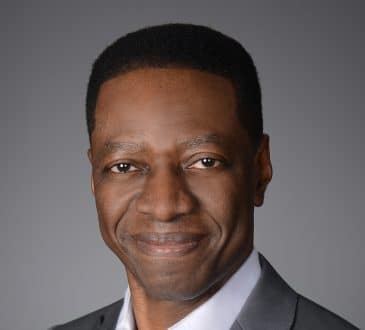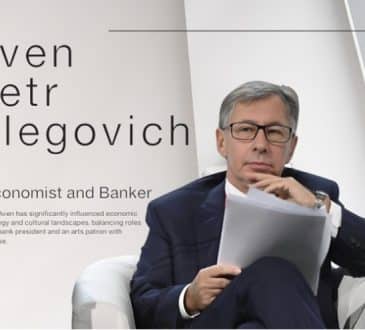Balancing Leadership Tensions: The Duality

In their song, “Hello, Goodbye,” Lennon and McCartney wrote,
“You say, ‘Yes’, I say, ‘No’
You say, ‘Stop’ and I say, ‘Go, go, go’
Oh no”
McCartney was the primary writer, and he wrote the song when meeting with an assistant of The Beatles’ manager, asking for opposites to the words he came up with, such as stop for go, yes for now, and hello for goodbye. In the biography, “Many Years from Now,” McCartney said that the lyrics address duality, reflecting his astrological sign of Gemini. He added: “It’s such a deep theme in the universe, duality – man woman, black white, ebony ivory, high low, right wrong, up down, hello goodbye – that it was a very easy song to write.”
Opposing forces create tensions, and exceptional leaders understand every action has its pros and cons. Balance is the key to managing these tensions and to the everyday behavior of leaders. The pandemic brought enormous challenges to leaders in how to pay attention to the business while leading their teams to stay healthy, safe, and motivated. We saw many leaders rise to the occasion.
An outstanding leader can balance the needs of their organization with the needs of the business. If you don’t care for your employees, you cannot hope to achieve great results. If you don’t get great results, you cannot expect to have a thriving place of work. The solution is to lead with both your heart and mind.
The Dualities
The contradictory forces, when combined, can create a powerful approach to leadership. How would you lead with these opposing forces?
- Leading vs. Learning
In today’s complex world, we cannot expect a leader to be knowledgeable about everything. Knowing when to lead and when to learn from their team members and experts to guide the decision-making is vital to leadership success. - Telling vs. Listening
Sometimes, a leader has to communicate the vision to their teams. Getting the whole organization to be on the same page requires direct communication. On the other hand, when you want buy-in from them on your vision, you need to stop talking and instead listen. You should be willing to have a conversation, which only happens when you listen. - Analytical vs. Intuitive
Often a leader has a lot of information to make a decision. If you believe data exists, you should gather them and use your analytical capabilities in decision-making. On the other hand, if you have no data or incomplete data, you will have to use your intuition. In his book My American Journey, Colin Powell says he gathers as much information as possible before making a decision. With incomplete information, he uses his intuition to guide him. - Perfection vs. good enough
I worked as a software engineering leader for over 30 years, and one of the lessons I learned is about releasing software to users with good enough quality. Software is an art, and there is no such thing as perfect software. There are always bugs and incomplete features in a release. Given the constraints of release dates and resources, you don’t have the luxury of 100% perfect software. However, one could classify the bugs and work on priority issues.
Critical: The bug will prevent customers from using the system.
High: Most customers won’t be able to use the system.
Medium: Some users may have a poor experience with the system.
Low priority: While it is visible to users, there are workarounds.
Very low priority: Only the developer can see it, and doesn’t adversely affect the users.
Analogous to this, leaders have many decisions to make, and being aware of perfection but using a rule for “good enough” is key to being a good leader. - Confidence vs. humility
In some situations, you want to combine the opposing forces. When in a crisis, you want to project an image of confidence to guide the teams to weather the challenges. At the same time, you want to tell your team you are in this together and that you may not have all the answers. Use “humble confidence” in such situations to lead your team. - Task-oriented vs. people-oriented.
I came across a Tweet recently. It advised the leader to tell a team member in a difficult situation that he cared more about the member’s well-being than the results. If a manager told me this, I wouldn’t believe it and wonder if he was authentic. You see, a leader has to care about the results while at the same time caring for their teams as well. The right way to lead is to focus on the person. You don’t need to bring up the results, and you don’t need to remind them there are tasks to be done. Focus on the person, and ask how you can support them.Skilled leaders don’t see themselves only as task-oriented or people-oriented. Instead, they are constantly evaluating the situation and applying their best judgment that fits. These leaders balance the need to be strong and lead by empowering the team that can guide itself. They understand their strengths, see their weaknesses, and work to compensate for them. - Motivating vs. empathetic
If you are a leader who prides herself on achieving results, ask yourself how much attention you pay to your team’s empowerment and growth. Do you use motivation and empathy equally, using what is appropriate to the situation? Leaders must show compassion for those they lead while bolstering their spirits to keep going.
Leading in the World of Duality
An excellent leader is very good at managing tensions when working with her team. In 2000, Daniel Goleman, author of the book, Emotional Intelligence, introduced six styles of leadership based on research involving 3,871 executives— visionary, coaching, democratic, affiliative, pacesetting, and coercive. An emotionally intelligent leader will use one of these styles depending on the situation, many of them in a single day, sometimes combining two or more styles.
Leaders have to work with opposing forces every day. Every decision has its pros and cons. You can manage leadership tensions by assessing the situation and using a leadership style that fits. You become better at leading with time, practice, flexibility, and learning from each experience.
Written by Shantha Mohan Ph.D.
Have you read?
These are the countries with the Highest Average Salaries, 2022.
International Financial Centers Ranking, 2022.
Hygiene-driven efficiency: a value-driving benefit for businesses by Dr. Lisa Ackerley.
Trading In Traditional CEO Thinking For Holistic Leadership by Laura Gerrits.
CEO Spotlight: HR Trailblazer and Founder of Fulcrum HR Consulting Kelly Kubicek Shares Her Secrets to Empathetic Leadership.
Why leaders should be data-informed, not data-driven by Dr. Selena Fisk.
Stock Rights That Protect the Value of Your Executive Equity Compensation by Robert A. Adelson, Esq.
Add CEOWORLD magazine to your Google News feed.
Follow CEOWORLD magazine headlines on: Google News, LinkedIn, Twitter, and Facebook.
This report/news/ranking/statistics has been prepared only for general guidance on matters of interest and does not constitute professional advice. You should not act upon the information contained in this publication without obtaining specific professional advice. No representation or warranty (express or implied) is given as to the accuracy or completeness of the information contained in this publication, and, to the extent permitted by law, CEOWORLD magazine does not accept or assume any liability, responsibility or duty of care for any consequences of you or anyone else acting, or refraining to act, in reliance on the information contained in this publication or for any decision based on it.
Copyright 2024 The CEOWORLD magazine. All rights reserved. This material (and any extract from it) must not be copied, redistributed or placed on any website, without CEOWORLD magazine' prior written consent. For media queries, please contact: info@ceoworld.biz
SUBSCRIBE NEWSLETTER








